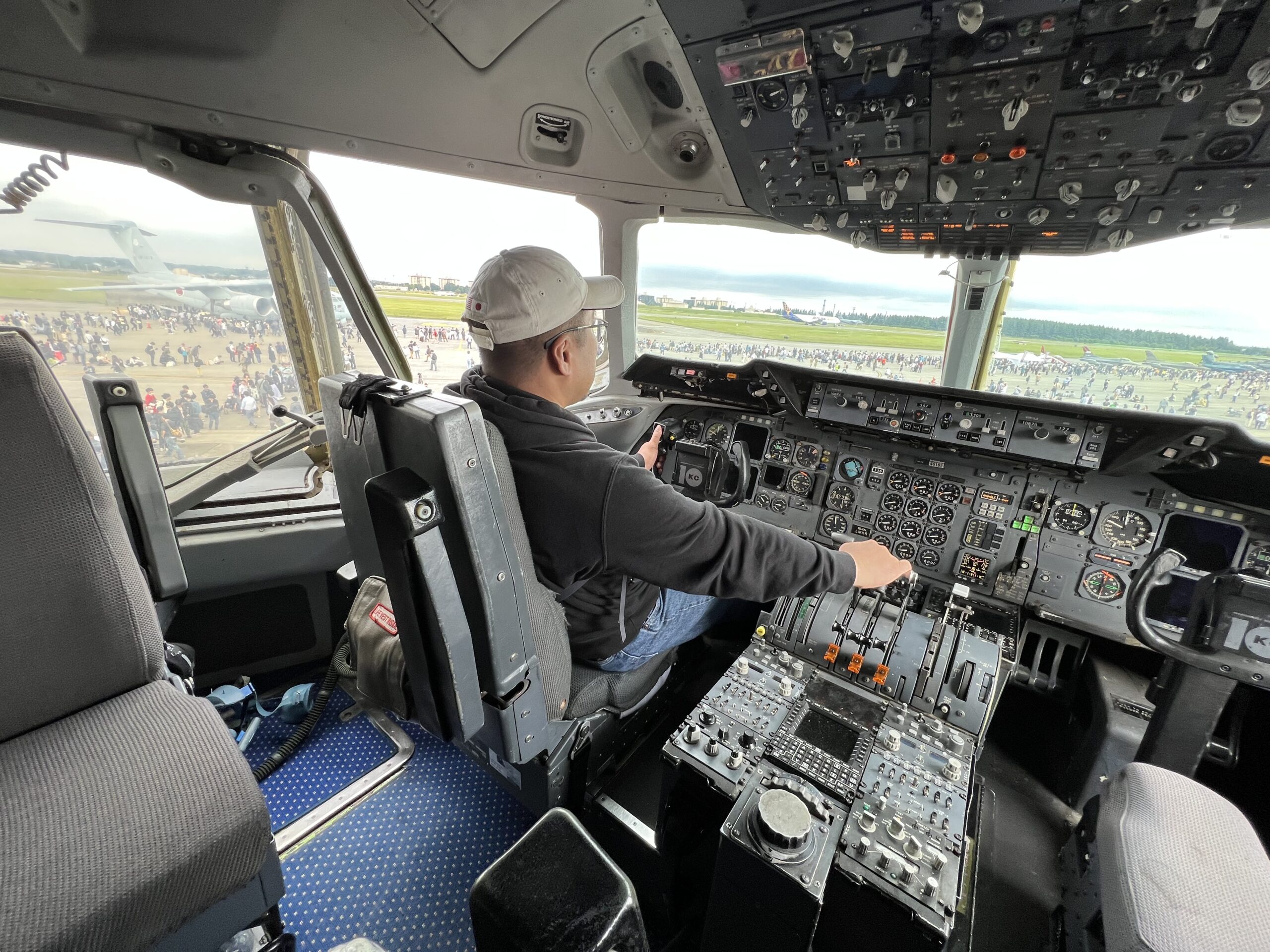日本文が後ろに続きます。
As I wrote in this entry of my blog, I became interested in flying an airplane last year; I had been interested in airplanes and aviation 20 years ago, but at that time, I was more fascinated by the women flight attendants who took care of the passengers in the cabins of airplanes than by the flying itself. This time, I was seriously interested in piloting the plane itself.
Of course, I don’t have the time, ability, or financial resources to attend flight school or have a flight instructor train me to get a certificate to fly an actual airplane. What I am trying to do is just a simulated flight using a flight simulator. Nevertheless, the version of Microsoft Flight Simulator released in 2020 is much closer to flying a real airplane than the previous versions, so mastering how to fly in that simulator is enough for me. Most reassuringly, nobody will die or be injured if I make a mistake in the controls.
In the months since late last year, I taught myself about navigation, including using wind triangles to determine true airspeeds and tracks from winds and courses, airplane structure, basics of aerodynamics, weather theory, maneuvers, and facilities and signage at airports. The Federal Aviation Administration (FAA)’s free online resources such as charts, handbooks, and other publications, and the airplane manufacturers’ online Airplane Flight Manuals and Pilot’s Operating Handbooks (AFM/POH), were excellent teaching aids. Aviation-related websites, such as SkyVector, Aeronautical Information Manual, and FlightService also helped a lot.
After learning all I could about airplanes, I bought a reasonably inexpensive gaming PC and installed Microsoft Flight Simulator 2020. I then purchased a control yoke, rudder, and thrust lever for flight simulation software and connected them to the PC. I went through the flying tutorials in that software and learned the basics of piloting. Much of what I had learned about airplanes up to that point came in handy. I chose the Cirrus SR22, one of the most used aircraft in primary flight training, and practiced for a few months before switching to a twin-engine Beechcraft G58 Baron. The Civil Aviation Academy in Japan uses these aircraft types to instruct students who wish to become professional airline pilots. I’ve flown for hundreds of hours between major airports in Japan and the United States (and made dozens of planes crash in the process, though).
I am now simulating IFR (instrument flight rules) flights from one large city to another using mainly the Boeing 787 Dreamliner. Learning to use the Flight Management System is challenging, and navigating an airplane properly by correctly programming the FMS with information on departure and arrival airports and en route airways is very difficult. Still, I am delighted when I can complete a flight to landing. It is still profound, and there is much to learn, but it is a great way to relieve daily stress.
ブログでも以前書いたように、去年から飛行機の操縦に興味を持っています。実際には20年前も飛行機や航空には興味があったんですが、そのときは操縦そのものよりも客室にいるCAのほうに魅せられていたんですが、今回はガチで飛行機を操縦することに興味があります。
もちろん今から実機のライセンスをとりに学校行ったり教官について訓練を受けたりするような時間も能力も金銭的余裕もないので、あくまでフライトシミュレーターでの操縦のマネごとをするだけの話ですが。でも最近のマイクロソフトのフライトシミュレーターはかなりリアルさが実機に近づいているようなので、それをある程度マスターできれば自分としては十分かと。ミスっても誰も死なないし、怪我もしないので。
去年の暮れぐらいから、空中航法とか風力三角形を使って風向きや航路から真対気速度と航跡を求めたりとか、飛行機の構造とか、航空力学の基礎とか、気象理論とか、マニューバーとか、空港の施設やら標識やら独学で勉強してました。アメリカの連邦航空局から航空図やら操縦ハンドブックやらいろんな資料が無料で出ているのでいい教材が簡単に手に入ります。あと飛行機メーカーが出している操縦マニュアルとかパイロット運航ハンドブック(AFM/POH)とかもネットに出ているのでプロシージャーとか覚えたりもできます。SkyVectorやらAISジャパンやらFlightServiceやらの航空関係のサイトとか、日本航空機操縦士協会が出してるAIMーjなんかも役立ちます。
ひととおり勉強したあと、そこそこ手頃なゲーミングPCを買ってMSFS2020をインストールし、コントロールヨークとラダーとスラストレバーを買ってPCにつないで使い始めると、これまで学んだ知識がそのまま役に立ちました。航空大学校で訓練で実際に使われているシーラスSR22を機体に選んで何ヶ月か練習し、そのあとは双発機のビーチクラフトG58バロンに乗り換えました。だいたい日本とアメリカの空を数百時間ぐらい飛んだかと思います(その過程で何十機も墜落させましたが)。
今はボーイング787で計器飛行の練習してます。FMSを使いこなして正しくプログラムするのは難しいんですが、ちゃんと着陸までできるとやっぱり嬉しいですね。まだまだ奥が深いですがストレス解消にはもってこいかと。

Leave a Reply